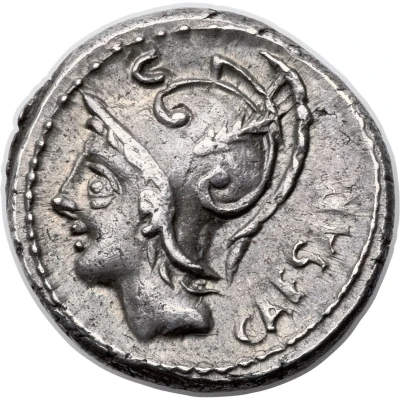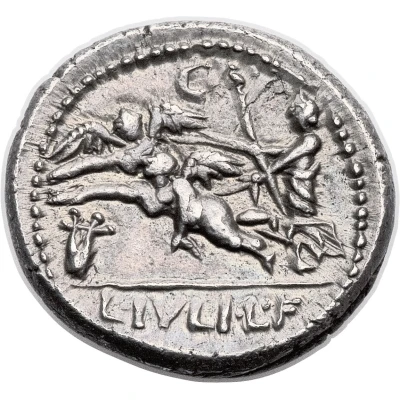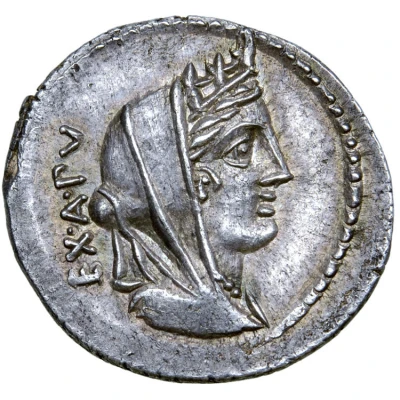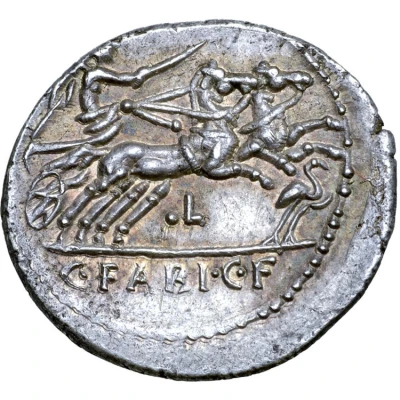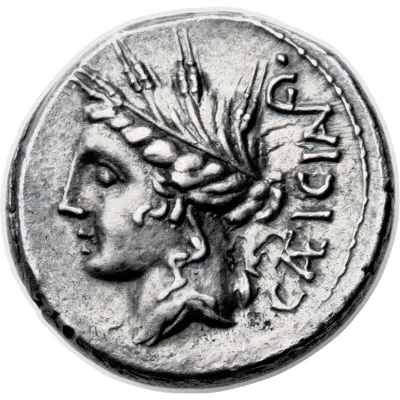
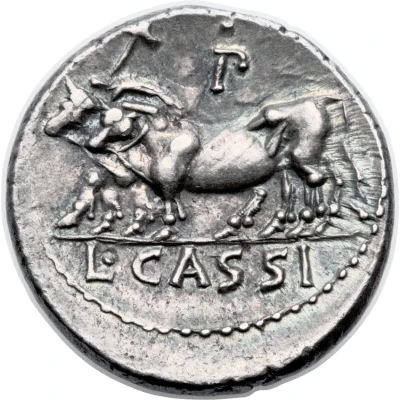

© Heritage Auctions
Denarius Cassia: Lucius Cassius Caeicianus; CAEICIAN / L•CASSI 102 BC
102 BC year| Silver | 3.85 g | 19 mm |
| Issuer | Rome › Roman Republic (509 BC - 27 BC) |
|---|---|
| Period | Republic (509 BC - 27 BC) |
| Type | Standard circulation coin |
| Year | 102 BC |
| Value | Denarius (1) |
| Currency | Denarius of 16 Asses (141 – 27 BC) |
| Composition | Silver |
| Weight | 3.85 g |
| Diameter | 19 mm |
| Shape | Round (irregular) |
| Technique | Hammered |
| Orientation | Variable alignment ↺ |
| Demonetized | Yes |
| Updated | 2024-10-06 |
| Numista | N#66661 |
|---|---|
| Rarity index | 93% |
Reverse
Yoke of two oxen left; above, control-letter.
Part of moneyer mark in exergue.
Script: Latin
Lettering: L•CASSI
Translation: Lucius Cassius
Comment
The gens Cassia was a Roman family of great antiquity originally patrician, but all of the members who appear in later times were plebeians. The first of the Cassii to obtain the consulship was Spurius Cassius Viscellinus, in 502 BC. He was the proposer of the first agrarian law, and was put to death by the patricians. The Cassia gens was reckoned one of the noblest in Rome; and members of it are constantly mentioned under the Empire as well as during the Republic.Interesting fact
The Denarius coin , issued during the Roman Republic in 102 BC, features an image of a Roman warship on its reverse side. This design was meant to symbolize the Roman Republic's growing naval power and its ability to project force across the Mediterranean. The inclusion of a warship on a coin was a common motif in Roman coinage during this period, as it represented the military might and expansionist ambitions of the Roman state.
